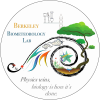Reports
Contents
| Title: | Twitchell Alfalfa - NDVI (SRS, Arable) | ||||||||||||||||||||
| Date: | 2017-02-02 - 2018-05-20 | ||||||||||||||||||||
| Data File: | TA_NDVI.csv | ||||||||||||||||||||
| Refers to: | TA,882103036,882103061 | ||||||||||||||||||||
|
Various sensors measuring NDVI have been installed across the Delta sites over the last several years. At some sites, the SRS sensors from Decagon/METER have been drifting low, so I wanted to compare them with other NDVI measurements.
For some sites with I also compared GCC with the various NDVI values to see how much GCC values varied year over year. Photos were taken by a variety of cameras: Netcam Stardot cameras (the official camera of the Phenocam Network®), Canon point-and-shoot cameras with custom firmware, or a Raspberry Pi camera. I used Joe's datafetch tool to calculate daily average mid-day values of NDVI and GCC from the various sensors. Mid-day values included data from 11:00 to 13:00, 5 values a day. I despiked the data in Excel.
See reports for other Delta sites here: East Pond / Sherman Wetland Temp Tower (both sites had same set of SRS sensors) Twitchell Alfalfa / Sherman Barn (both sites had same set of SRS sensors) Â
ÂFigure 1. Twitchell Alfalfa NDVI. SRS NDVI is about 0.1 lower than broadband NDVI year round. When Arable NDVI > 0.5, it matches better with broadband NDVI. When Arable NDVI < 0.5, it matches better with SRS NDVI. Figure 2. Individual bands of SRS sensor. No obvious decay. Â Figure 3. Red reflectances from SRS and Arable data. General trends match although Arable reflectance is consistently lower than SRS reflectance. Â Figure 4. NIR reflectances from SRS and Arable data. Again, general trends match although Arable reflectance is consistently lower than SRS reflectance. Â
Figure 5. Linear regression between SRS and other 2 NDVI methods. The fits are both pretty good (R2=0.93-0.96), but the slopes are more different than I expected, m=1.1 and m=0.8. Â Figure 6. Timeseries of GCC and SRS data. Annual patterns seem reasonable, and both capture the timing of the mowing. In Spring 2017, GCC decreases sooner than SRS. In Spring 2018, GCC starts increasing earlier and is more sensitive than NDVI. Â
Figure 7. Linear regression between GCC and SRS data. Fit is only ok, R2=0.65. |
|||||||||||||||||||||
| |

